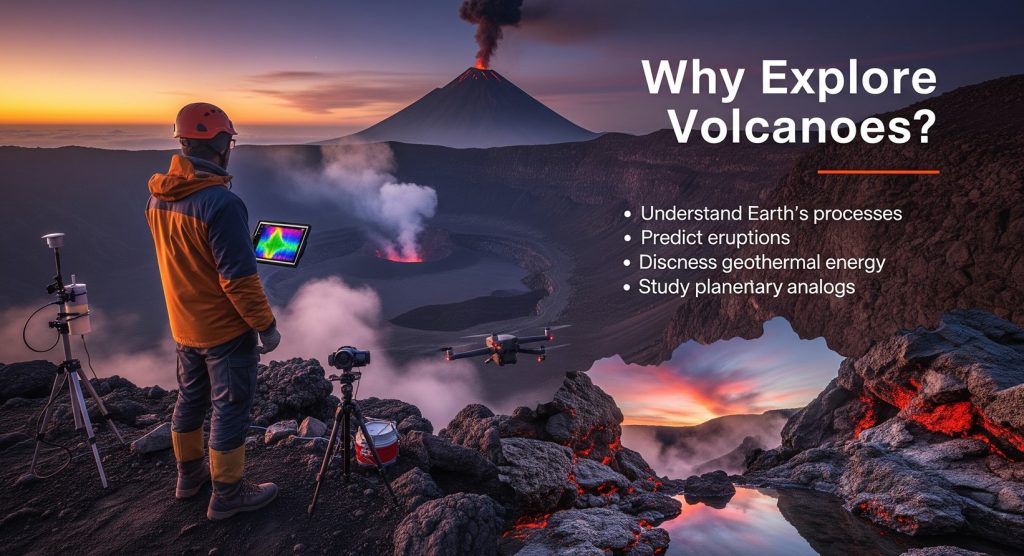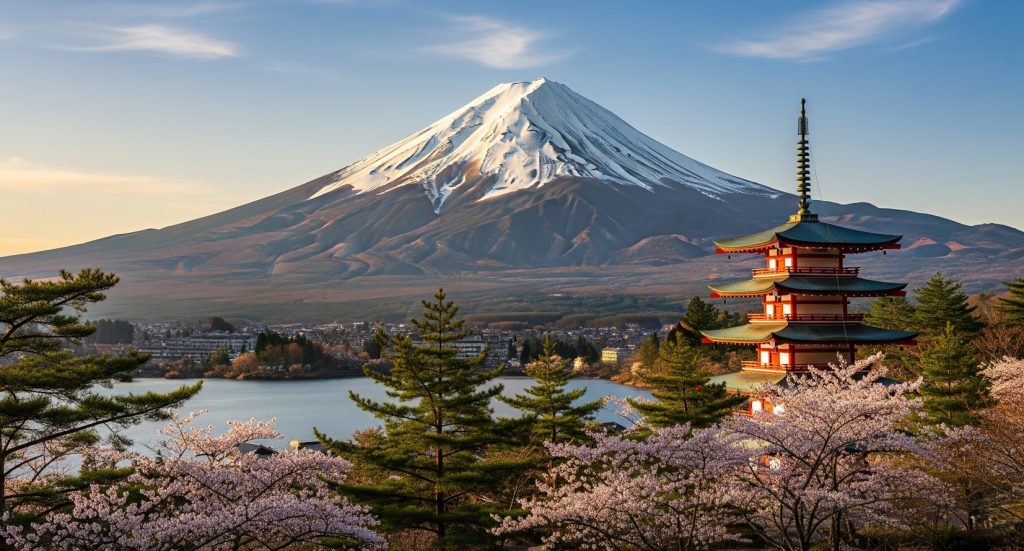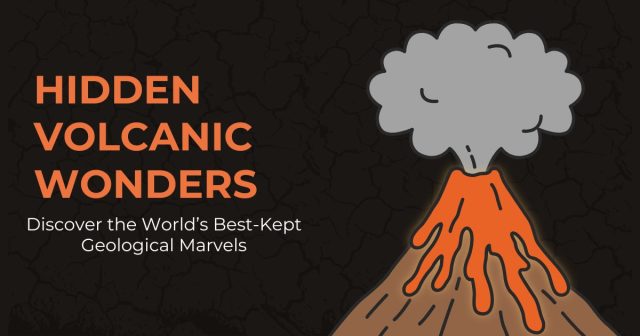Why Explore Volcanoes?
From the fiery molten lava throbs to the otherworldly landscapes carved by centuries of eruptions, volcanoes represent some of Earth’s most dramatic and captivating natural wonders. Whether you’re chasing the glow of a lava flow against a night sky or marveling at the intricate patterns of hardened basalt rock, volcanic regions offer a unique adventure that combines geology, culture, and breathtaking vistas. This guide explores the world’s most majestic volcanoes, providing essential info on how to plan your trip safely, choose the best viewing spots, and respect both the environment and local communities. Ready to ignite your wanderlust? Let’s dive into the hidden volcanic wonders that await.

1. Mount Etna, Sicily, Italy
Towering at over 3,300 meters, Mount Etna is Europe’s most active volcano and one of the continent’s most iconic natural landmarks. Its frequent eruptions, which range from gentle lava flows to powerful explosive events, have shaped the surrounding landscapes and local culture for millennia. Guided hikes take you across lunar-like craters, while cable cars and off-road vehicles can whisk you closer to the summit. In winter, Etna transforms into a snow-capped wonderland where you can ski with a smoking volcano on the horizon. When planning your visit, check volcanic activity reports from the National Institute of Geophysics and Volcanology (INGV) and hire a licensed mountain guide for safe passage across the unstable terrain.
2. Mount Fuji, Honshu, Japan
Mount Fuji’s symmetrical cone has been immortalized in art and literature for centuries, and climbing it remains a rite of passage for many travelers. The official climbing season runs from early July to mid-September, when mountain huts are open and weather conditions are most favorable. The Yoshida Trail, the most popular route, offers breathtaking sunrise views from the summit and a network of rest stations along the way. Remember to pack layers—temperatures near the top can drop below freezing even in summer—and obtain a voluntary contribution ticket to support trail maintenance. Beyond the climb, explore the Fuji Five Lakes region, where you can relax in an onsen with Fuji’s perfect reflection mirrored in serene waters.

3. Mount Bromo, East Java, Indonesia
Part of the vast Tengger massif, Mount Bromo is famed for its otherworldly sea of sand and the eerie glow that illuminates its smoking crater at dawn. To experience this surreal panorama, most visitors hike or ride a horse across the volcanic desert before ascending roughly 250 steep steps to the crater rim. For an even higher vantage point, scale the nearby Mount Penanjakan for an unobstructed sunrise view over the entire volcanic complex. Surrounding villages uphold centuries-old Hindu traditions, and the annual Kasada festival sees offerings cast into Bromo’s crater to appease the mountain gods. Pack a warm jacket—pre-dawn temperatures can be surprisingly chilly—and a dust mask for the sandy valley below.
4. Mount Kilimanjaro, Tanzania
Although not a classic stratovolcano, Mount Kilimanjaro’s dormant peaks—Kibo, Mawenzi, and Shira—form the tallest free-standing mountain on Earth. The trek to Kibo’s summit, Uhuru Peak, is a multi-day expedition that traverses rainforest, alpine meadows, and arctic desert. Among the various routes, the Lemosho and Machame trails offer diverse scenery and better acclimatization profiles. Expect long days of hiking at altitudes above 4,000 meters, so invest in high-quality layering, sturdy boots, and a reliable porter or guide service. Reaching the summit at sunrise is a life-changing moment, but equally memorable are the encounters with colobus monkeys, giant heather forests, and the panoramic Savannah of the Kilimanjaro National Park.
5. Pacaya, Guatemala
Rising near Antigua, Pacaya is one of Guatemala’s most accessible and active volcanoes, making it an ideal choice for day-trip adventures. Guided hikes lead through lush coffee plantations and endemic pines before reaching rugged lava fields where you can roast marshmallows over hot volcanic vents. On clear days, climbers are rewarded with views of neighboring Agua, Fuego, and Acatenango volcanoes arranged like guardians around the Guatemalan Highlands. Night treks are a thrilling option, offering a chance to see glowing lava flows illuminate the crater walls in crimson hues. Wear sturdy shoes with good grip, and bring a headlamp, warm layers, and plenty of water for the 2–3 hour ascent.
6. Arenal Volcano, Costa Rica
Arenal’s near-perfect cone stood as one of the world’s most active volcanoes until 2010, when its explosive eruptions subsided. Today, its rainforest slopes are dotted with hot springs, waterfalls, and canopy tours that make it a centerpiece of Costa Rica’s adventure offerings. You can hike through the Arenal Volcano National Park along well-marked trails that traverse lava fields dating back to the 1968 eruption, spot howler monkeys in the treetops, and enjoy views of Lake Arenal shimmering at the volcano’s base. For a truly relaxing experience, soak in natural thermal pools as steam rises in the jungle dusk. Visit during the dry season (December to April) for the clearest summit views and minimal trail mud.

7. White Island (Whakaari), New Zealand
Located off the coast of the North Island, White Island is New Zealand’s only active marine volcano and one of the few places where you can walk right into a live volcanic crater. Guided boat tours or helicopter flights deliver you to the crater floor, where steaming vents, bubbling mud pools, and sulfuric fumaroles create an alien landscape. Strict safety protocols and real-time monitoring keep visitors secure, but be prepared for acidic air, rough seas, and sudden weather changes. Beyond the main crater, explore the island’s shoreline for sea bird colonies and tidal pools. White Island requires advance booking and adherence to Department of Conservation guidelines—respecting this powerful, unpredictable environment is paramount.
Tips for Safe and Responsible Volcanic Travel
- Check Activity Levels: Always consult official volcanic observatories or local authorities before visiting. Alert levels can change rapidly.
- Hire Licensed Guides: Professional guides ensure safe routes, up-to-date hazard info, and cultural insights that enrich your experience.
- Pack Smart:
Sturdy footwear, layered clothing, headlamps, dust masks, plenty of water, and sunscreen are essential in volcanic terrains. - Respect Local Communities:
Many volcanic regions hold sacred or historical significance. Follow local customs and minimize your environmental footprint. - Leave No Trace:
Stay on marked trails, carry out all trash, and avoid disturbing wildlife or geological features.
Conclusion
Volcanoes offer travelers an unparalleled blend of adventure, natural beauty, and cultural richness. From the snowy slopes of Japan’s Mount Fuji to the tropical rainforests surrounding Costa Rica’s Arenal, each volcanic destination showcases unique landscapes shaped by the power of Earth’s inner forces. By planning responsibly, respecting local guidelines, and choosing reputable guides, you can safely witness the raw majesty of these geological giants. So pack your bags, lace up your boots, and prepare to stand on the edge of our planet’s most spectacular and dynamic wonders—igniting memories that will last a lifetime.











